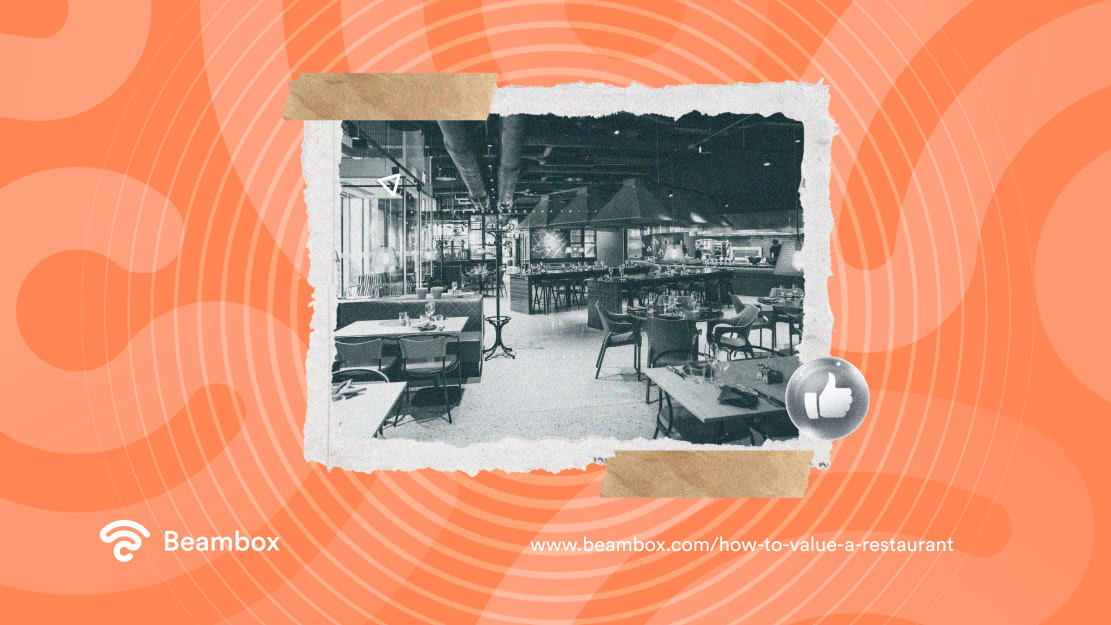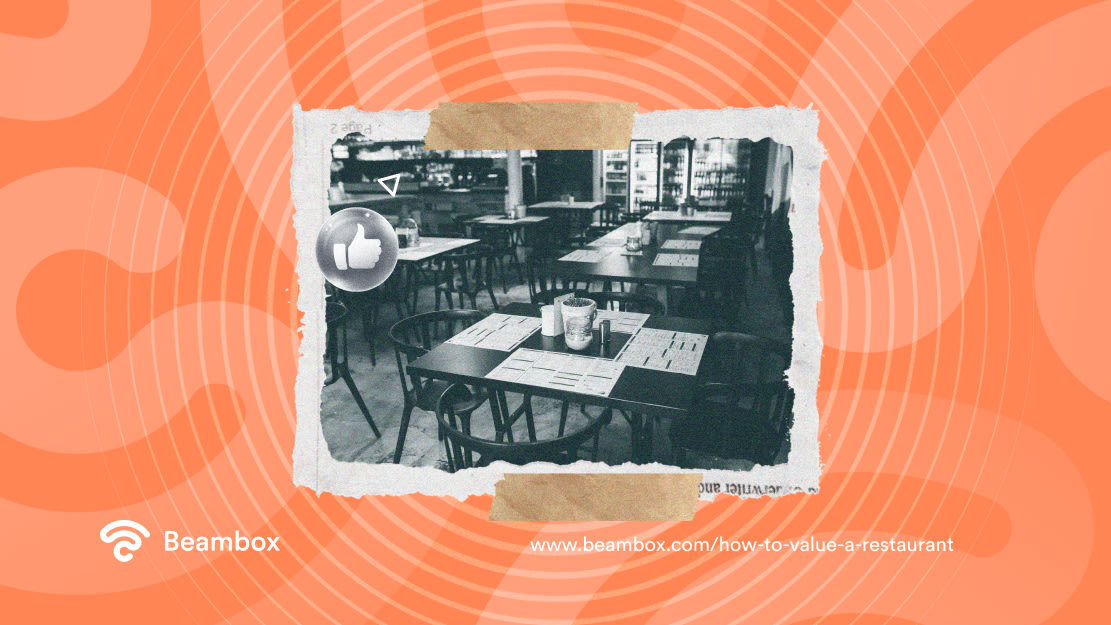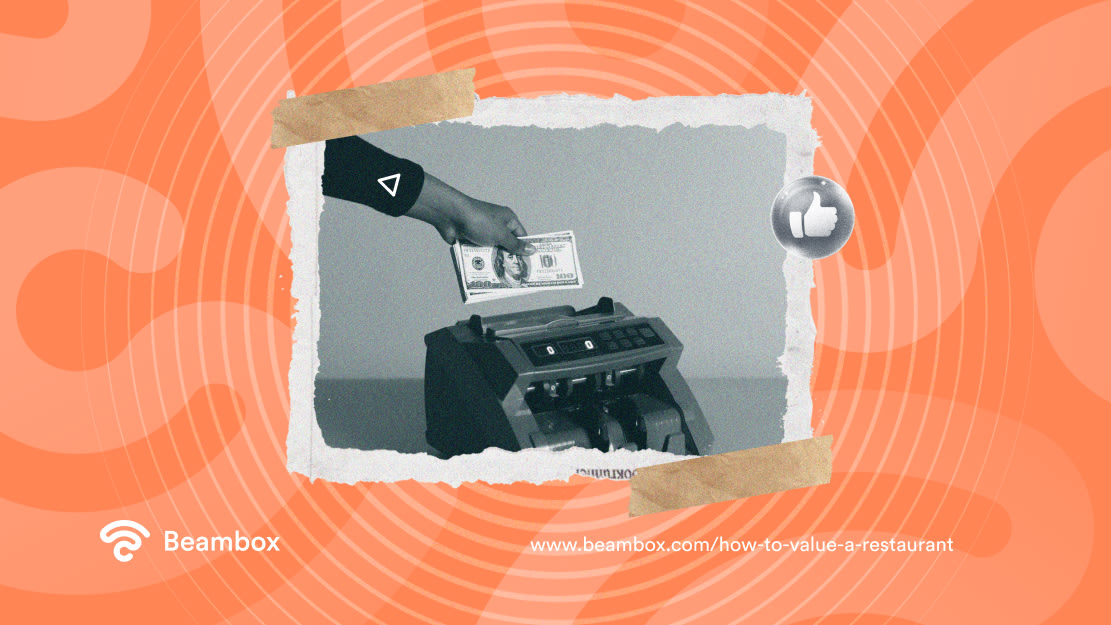Restaurant owners looking to sell their business often wonder how to value a restaurant fairly. That is a great first step since those who don’t pay attention to this might lose money. After all, how would you ask for a good selling price if you don’t know the current value of your business?
Even if you’re not planning on selling your restaurant immediately, it’s a good idea to conduct regular valuations.
In this article, we’ll go into depth about those reasons.
Additionally, you’ll get complete information on the three methods you can use to calculate the value of your business. By the end of this discussion, you’ll feel confident enough to initiate the valuation process.

Situations Where Restaurant Valuation Comes in Handy
Before we jump to the valuation methods, let’s discuss why this process is important in the first place. There are various scenarios where you might need this information, the most obvious being selling or renting.
It’s easy to think that improving the exterior and internal operations is the most important step in selling a restaurant. However, you should know where you currently stand before making the necessary changes.
Otherwise, how would you know what areas need improvement for a better selling price? Alternatively, you may go for shared ownership of your restaurant. Business owners often do this to bring in a fresh perspective and new skills that work for both parties.
When you’re selling an equity, the buyer will ask you about everything from your assets to annual revenue. These are things you’ll know by evaluating your restaurant.
Similarly, renting is another situation you might find yourself in for several reasons. Retirement and interest in other ventures are the most common ones. Again, asking for a fair rent amount depends on your current standing.
Even if you don’t value your restaurant, chances are, the renter or buyer will. Some might even try to take advantage of this by offering a lower price. The best way to avoid this is to calculate the numbers yourself.
Lastly, make strategic changes to your restaurant for better revenue instead of selling it. You’ll need to apply for a bank loan or SBA funding or contact an investor.
The bank will want to know whether you can repay the amount. Similarly, the investor will want to see whether they’ll get a suitable return on investment (ROI). Therefore, you must be able to prove your restaurant’s worth.
How To Value a Restaurant for Sale: 3 Methods To Choose From
There are three main methods to value a restaurant, each with its pros and cons. But whichever method you use, consider working with a third-party evaluator or accountant.
That’s because whether you own a coffee shop or a full-service restaurant, selling it won’t be an easy job. Apart from the obvious factors like making it ready for sale, you have an emotional attachment to it. Such sentiments can cloud your judgment, prompting you to ask for more than what your restaurant is worth.
Or you might ask for less if you don’t have accurate numbers. So, once you have the appropriate person, choose one of the three methods below for how to value a restaurant for sale.

1. Calculate the Value of Your Assets
The first option to calculate your restaurant’s worth is the asset-based method. Here, you calculate the value of your physical and non-physical assets.
Physical assets are the things you can touch and see. This category includes kitchen equipment, furniture, vehicles, technical equipment, your restaurant’s land, etc.
On the other hand, non-physical assets include things you can’t touch or see. But since they help you run your restaurant, they have their worth. For example, customer loyalty, brand awareness, intellectual property rights, trademarks, etc. Or you might have secret recipes that are popular among your customers.
Anything that contributes to the success of your restaurant should give you a return when you sell it. Therefore, list them down and see how much they’re worth.
This method is the best when you’re selling a struggling restaurant. Nobody would want to buy a restaurant that isn’t generating much revenue. However, the restaurant location and assets themselves can provide you with some monetary benefits.
However, if your restaurant is doing good at the time of sale, you must use this method with the others. That’s because your income and assets will contribute to the overall value.

The income-based method relies on the annual income of your restaurant. Now, there are two ways to approach this method. The first one is to use your annual revenue. For this method, you’ll also need the industry benchmark for revenue in your particular sector. For example, if you own a fine dining restaurant, use the industry benchmark for that.
To find this benchmark, you must do some market research or consult a professional. Once you have this value, use the following restaurant valuation formula:
[Total annual revenue] x [multiplier for revenue against industry benchmark] = estimated restaurant value
On the other hand, you can use the seller’s discretionary earnings (SDE) as an income-based method. It is a measure of how much money a business makes before accounting for certain expenses.
Put simply, it includes the earnings before deducting expenses like non-cash items, one-time investments, and expenses specific to the owner. Using SDE is a good idea if you own a small business.
You can find this information by consulting your profit and loss statements, tax returns, and other financial statements. Then, find out the industry multiplier for SDE. Investopedia says this number is generally between 1.5 and 3. Once you have both values, plug them in the following formula:
[Restaurant SDE] x [multiplier for SDE against industry benchmark] = estimated restaurant value
However, if your income keeps fluctuating from year to year, you might not want to use the income-based method.

3. Approach the Market To Compare Your Worth
The last way to value a restaurant is to compare it with similar restaurants in the market. Most restaurant owners use this method after calculating their value, as with other methods. It helps them judge whether the number they got is up to the industry’s standards.
To follow this approach, research your market. Look at the amounts people are willing to pay for restaurants like yours.
However, you must be careful about the restaurants you choose for this comparison. You won’t get accurate numbers if they’re not closely similar to yours or don’t operate similarly. Moreover, use multiple restaurants instead of one or two.
For example, if you own a fast-food restaurant, look at businesses with a menu similar to yours. See if their target audience is the same as yours.
Moreover, look at their physical and non-physical aspects. Do they have similar brand awareness to yours? Also, look at their size and layout. All these things should be as similar to your restaurant as possible.
3 Factors That Affect Your Restaurant’s Valuation
Now that you know how to value a restaurant using three different approaches, let’s discuss another pressing issue.
The value of your restaurant won’t always remain the same. These three factors can affect your value even if you’re using the same business operations, staff, and resources:
- Economy: The restaurant industry is highly competitive, and people are always willing to invest in these businesses. However, even the most successful restaurants feel the blow if the economy is down. Selling your food business during bad times in terms of the economy might give you a lower price.
- Restaurant’s age: The proverb, “Old is gold,” is often true for businesses. Buyers might fear more risks if a restaurant is new. However, an established restaurant running for many years wins buyers’ trust.
- Licensing: When a restaurant has all the proper licenses, buyers tend to trust it more. It is not just the lease and agreements; your restaurant should also have the appropriate health and regulatory certificates.

Get the Most Out of Your Restaurant by Knowing Its Worth
As shown in the article, there are three approaches to value a restaurant. All of them provide useful information that can shape your final valuation.
If you are not ready to sell and want to increase your restaurant’s profitability, try Beambox WiFi marketing. This platform can help you make your marketing campaign more efficient and attract more customers.
Additionally, Beambox can help you automate the process of getting positive reviews for your restaurant. A crucial aspect of success in the restaurant industry. Start your 30-day free trial now!
Get Started With Free WiFi Marketing
Beambox helps businesses like yours grow with data capture, marketing automation and reputation management.
Sign up for 30 days free